Author: @JiBofan
Source: Twitter
Did Curve V2 lose to Uniswap V3 in the DEX battle? Many claim that Curve is the walking dead, but what do the numbers say? The answer will surprise you.
In short: Curve and Uniswap are both winners, but in different markets. Uniswap is in a 50/50 face-off with Curve in the stablecoin market, dominates in volatile currency pairs, and completely loses in the synthetic market.
The market is segmented as follows:
stable currency
Uniswap quadrupled its market share after the upgrade, but stabilized its earnings only after introducing a 1bps (0.01%) stablecoin exchange fee. During the UST unanchoring period, Curve's market share climbed back to 80%, after which Uniswap reclaimed its throne. The process has been tumultuous to say the least.
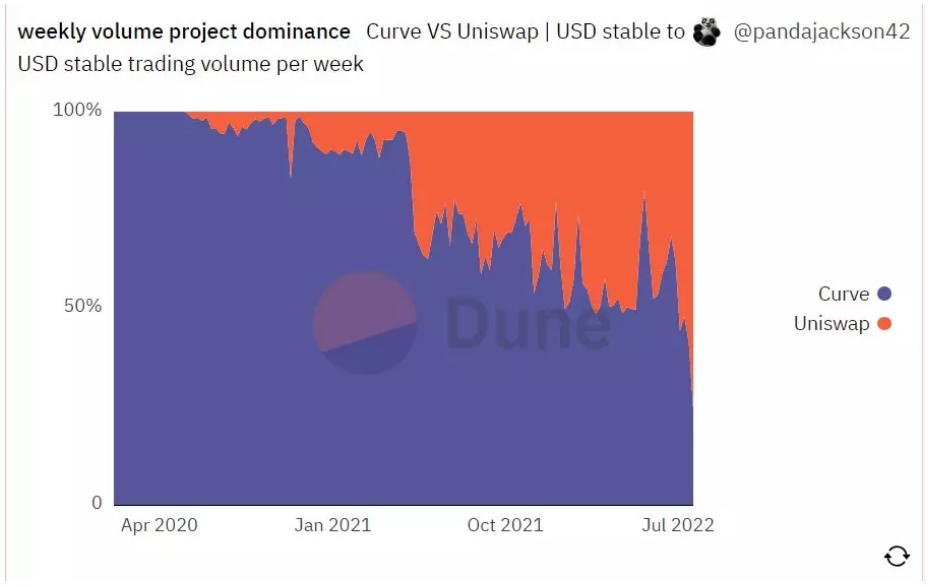
Total Locked Value
Curve pools tend to have larger TVLs than Uniswap pools due to: a) Curve’s highly incentivized governance structure coordinates LP incentives (e.g. CRV rewards), and b) the cumulative effect of the metapool increases 3pool’s liquidity.

Efficiency and Slippage
For the four most traded stablecoin pairs, except for USDC/USDT, Curve's pool utilization (24h VOL/TVL) is better. In terms of slippage, Curve and Uniswap scored similarly, with Curve slightly better on larger trade sizes like $10 million.
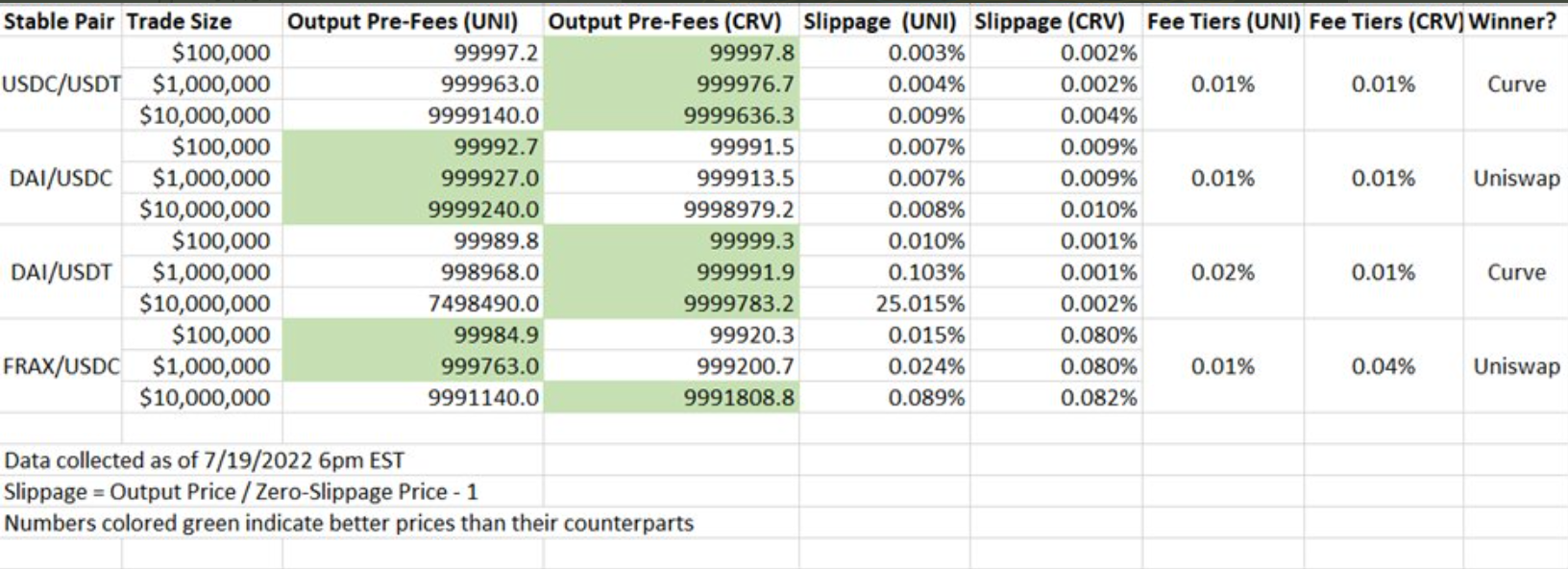
Bottom Line: Despite losing market share, Curve remains strong. While Uniswap’s average fee level is lower, Curve’s TVL is higher and its efficiency is comparable – this is because 1inch’s transaction volume routed to Curve is twice that of Uniswap in terms of USDC/USDT, the most traded currency pair on Uniswap many.

Volatile Currency Pairs
However, stable only accounted for 14% of Uniswap V3's transaction volume in the past year. For major volatile currency pairs such as ETH/BTC/USD, Uniswap is a clear overlord, beating Curve’s hard-earned gains in all aspects.
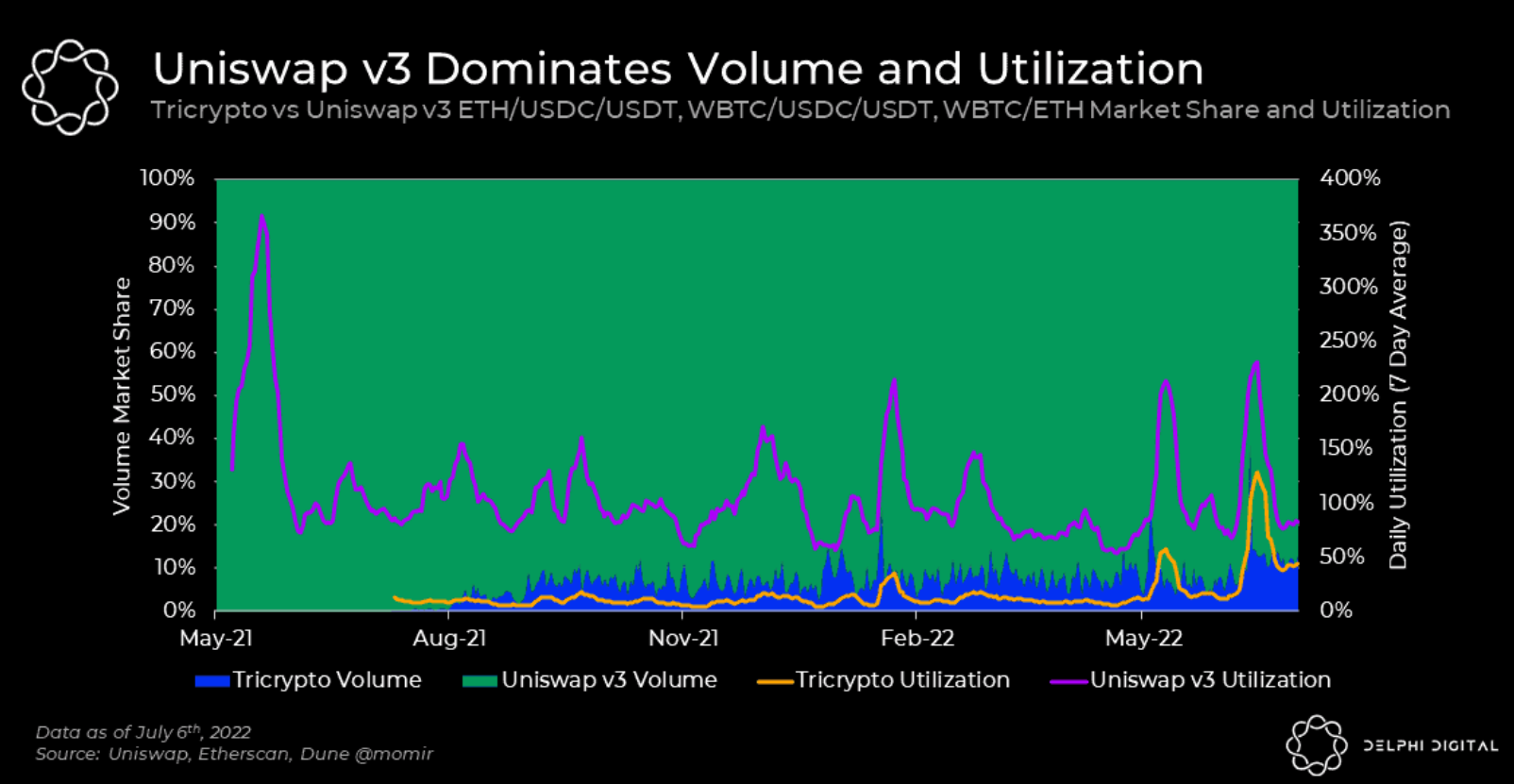
So, is Curve losing in the volatile currency pair market? For long-tail assets such as STG, BTRFLY, YFI, etc., Curve actually has better trading volume, but it is still less efficient.
That said, while Curve accrues higher transaction fees, Curve has a lower rate of return per dollar invested.
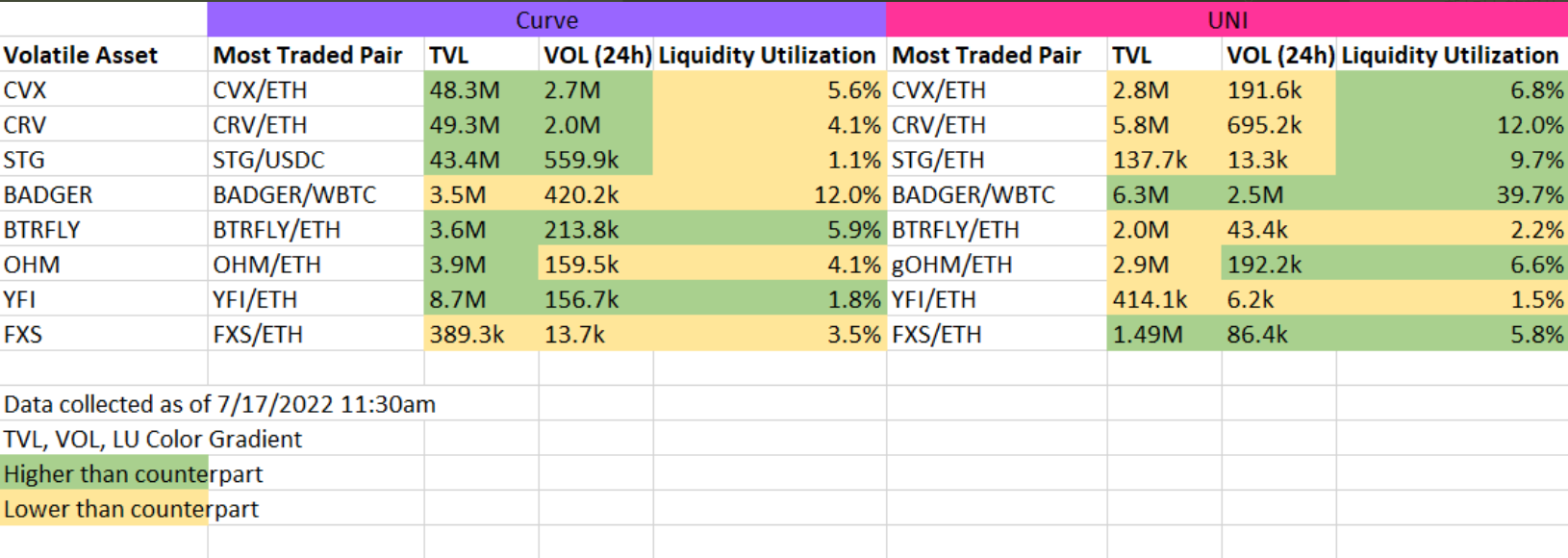
Synthetic asset trading pairs
Curve is the clear winner among “ETH/BTC-pegged coins” including stETH, sETH, and renBTC. Curve accounts for 65% of stETH’s daily volume (versus Uniswap’s 2%) and renBTC’s 84% of daily volume (versus Uniswap’s 14%).
How did Curve win? Is this victory big for Uniswap?
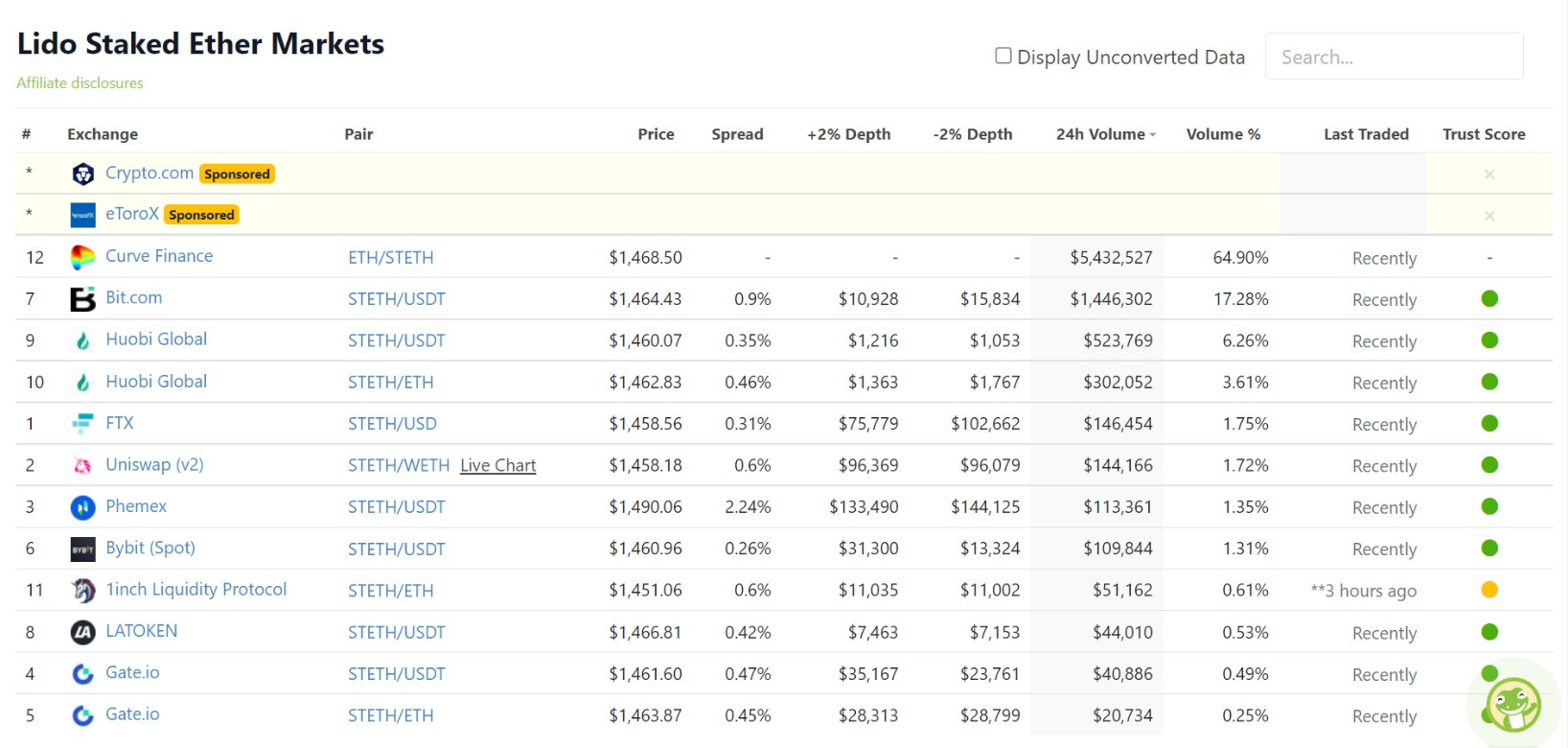
Curve has won from the start. Due to sufficient liquidity/LP incentives, Curve has the support of Lido and has become a semi-official stETH pool. Likewise, Curve’s gains on sETH and renBTC come from long-term partnerships with synthetic asset issuers like Synthetix and Ren.

How big is this victory?
Synthetic assets currently rank 8th among Uniswap pools in terms of daily volume on Curve (~20M), accounting for 1.6% of Uniswap volume (~7.9% of Curve). Future growth in synthetic assets could benefit Curve, but the industry as a whole is insignificant compared to volatile and stable assets.
future
Summary: For TVL and slippage, Curve performs similar or better than Uniswap for most long-tail assets and pegged assets. In terms of transaction volume, Curve mainly loses in ETH/BTC and stablecoins, but wins in synthetic assets.
For super long-tail assets like CULT, Uniswap is better because it is easy to set up a pool.
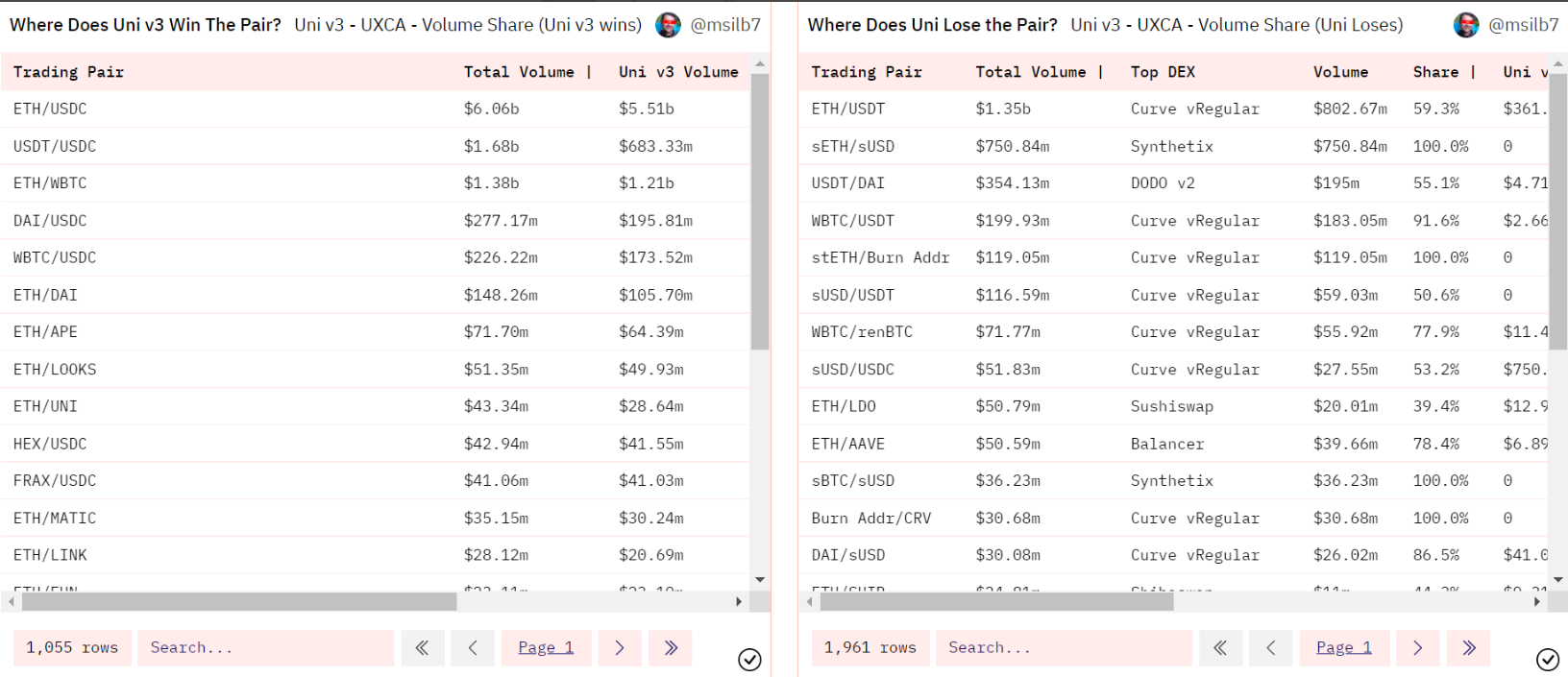
Why Curve's execution is good, but the transaction volume is low?
a) Market positioning is worse: Uniswap started with volatile assets (~10 times stable trading volume), and then developed specialized weapons, V3 focused on most trading pairs, and V2 focused on the tail. However, Curve is mostly limited to pegged currency pairs.
b) Curve is not winning over retail users: Although Curve only accounts for 24% of Uniswap’s transaction volume, 1inch DEX aggregators have a higher percentage of transaction volume routed through Curve, which shows Curve’s efficiency, but also its The number of users is much smaller.

What could be the next inflection point for Curve?
a) Expand the user base beyond DeFi enthusiasts by improving UI/UX, enhancing brand influence, etc.
b) Capturing the growing market for synthetic assets: As the largest market for stETH, Curve will likely benefit from the enhanced liquidity of stETH after the merger.
c) Expansion into other verticals (similar to how Uniswap acquired Genie): Rumor has it that Curve plans to issue a stablecoin, which could be an initial signal of its attempt to expand beyond AMMs.
However, all of this may also mean that CRV governance is more centralized, which may go against Curve's ethos as a decentralized and community-driven AMM. That, then, will be the trade-off the community will have to make in order for the Curve to seize the next summer.
This article does not compare average LP profitability. Given UniV3's previous IL report https://arxiv.org/ftp/arxiv/papers/2111/2111.09192.pdf , neither protocol produced much LP alpha based on market beta, ... and 32% The LP APY of the Curve pool is less than 1%. https://curve.fi/combinedstats
Thanks to @tomhschmidt for feature guidance, @haseeb@celiawan2@nicopei_eth for very helpful editorial comments, and @PandaJackson42@alex_kroeger@MSilb7@k06a for the data insights!
 JinseFinance
JinseFinance
 JinseFinance
JinseFinance JinseFinance
JinseFinance JinseFinance
JinseFinance JinseFinance
JinseFinance JinseFinance
JinseFinance Beincrypto
Beincrypto Cointelegraph
Cointelegraph Cointelegraph
Cointelegraph Cointelegraph
Cointelegraph Cointelegraph
Cointelegraph